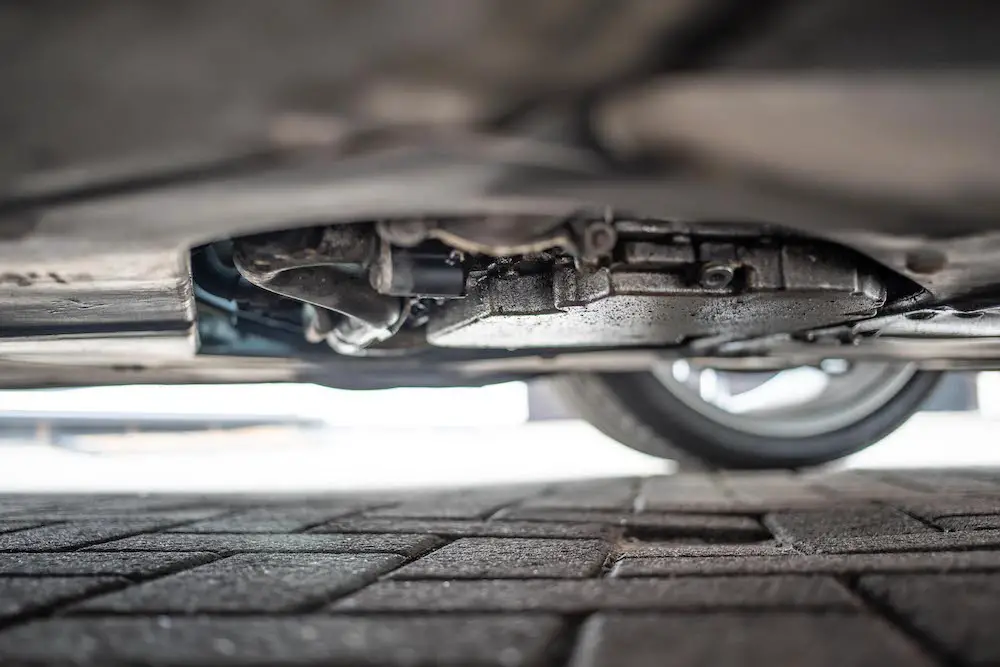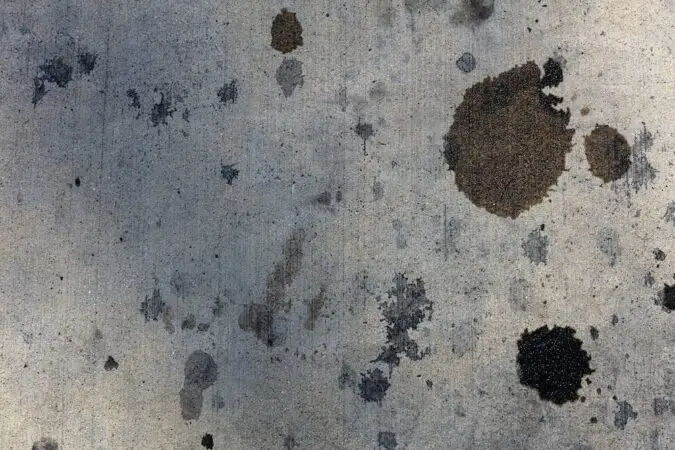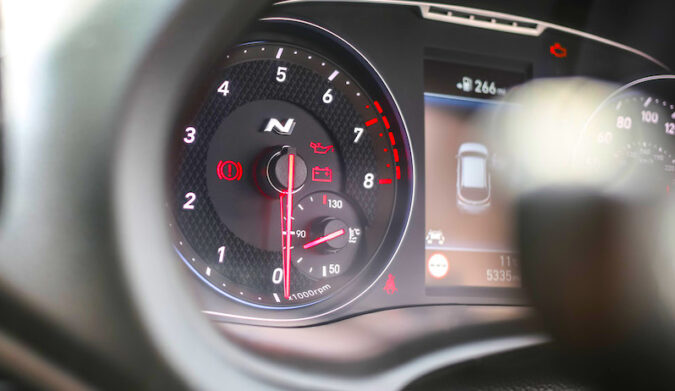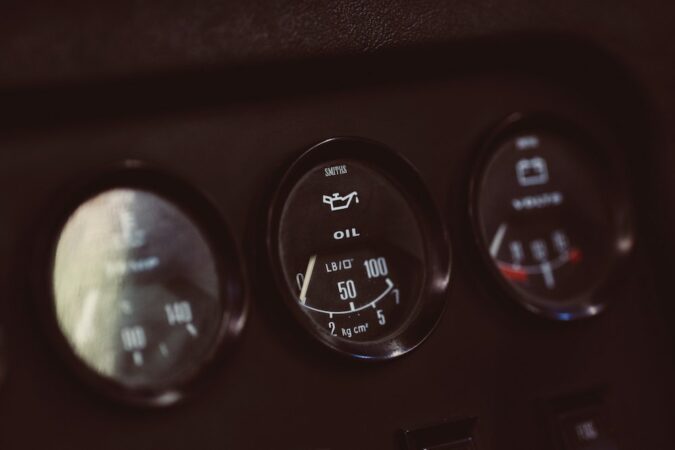Do you suspect that you have an oil pan gasket leak and you want to learn the oil pan gasket leak symptoms? Well, if that is the case, then you are at the right place because there will be a lot to cover on this topic where we are going to learn everything when it comes to locating oil pan gasket leaks.
Doing the proper research online is the right call if you are asking me. Out there there are a ton of mechanics that will charge you an arm and a leg for problems that are not even there at all. So, doing your own research on the topic and learning about the possible outcomes should be your top priority.
Especially when it comes to a problem with oil leaks. Even though people will say that finding an oil leak is an easy thing to do. It is actually not, old engines are greasy. So, all the engine in some cases is covered in oil. And good luck finding the leak in this case if you don’t know the symptoms and also where to look. This is why we are going to help you out by giving you the right input on the matter.
First, we are going to learn how the engine lubrication system works. Then we will cover what is an oil pan gasket and why it is so important. After that, we will cover all about oil pan gasket leak symptoms. After we cover the symptoms, we will move on to sorting the problem out and what could be the costs involved. So, if you want to learn more, follow along.
How Does The Engine Lubrication System Work
Now before we dive into the oil pan gasket leak symptoms, let’s take a look at how the engine lubrication system works. I bet that there are a lot of people facing similar issues who want to learn more about the basics when it comes to problems like these. This is why we will cover the basics briefly and learn all about this system.
As you probably know, modern automobiles have a sump lubrication system. The core of the system is the oil pump which is driven by the crankshaft of the engine. In some designs, this pump is driven by the camshaft. So, it is really a matter of the engine design and the engine designers which route they chose to go.
Nevertheless, this oil pump is connected to the pickup tube that goes to the bottom of the oil pan. This is basically the lowest point of the engine.
Then as the oil pump spins, it drives the engine oil through the oil passageways inside of the engine. So, from the bottom, it takes the oil to the top of the engine where rockers are located. And then the oil goes back down and circulates around the engine while the engine is working.
Pretty basic process. But it has a ton of places that need to hold a tight seal in order for you not to have an engine oil leak. Namely, the valve cover gasket, head gasket, front, and rear main seals, freeze plugs, as well as the oil pan gasket. But what is an oil pan gasket? More on that we will cover next and then we will learn the oil pan gasket symptoms and see what could be the representations of this problem.
What Is An Oil Pan Gasket
We have covered how lubrication works and learned that this system functions with the help of the pickup tube that is located at the bottom of the oil pan and collects the oil with the help of the oil pump. Then disbursing it throughout the engine.
Another thing that we forgot to add is that this oil circulation does not only help when it comes to lubrication but it also helps when it comes to cooling. That’s right, proper cooling of the engine is made possible with the help of the engine oil.
While the engine oil is inside of the block, it warms up. So, when it comes down inside of the oil pan it cools off with the help of air drag hitting the oil pan. Some high-performance engines even have extra oil coolers to aid the cooling of the oil. But most engines used for general purposes have only the oil pan.
The pan as you probably know is a big metal piece that collects all the engine oil. The bigger the capacity of the engine, the bigger this oil pan would be. But what is the oil pan gasket?
The oil pan gasket is the material that is found between the oil pan and the engine block itself. This is usually a gasket in most vehicles. Some use rubber as a material, some use steel core with rubber coating. It really depends on the carmaker to decide what to put in the car.
What is worth noting is that these are no heavy-duty gaskets since they don’t have a lot of stress on them. But why they are so important? More on that, next and then we will cover the oil pan gasket leak symptoms.
Why The Oil Pan Gasket Is So Important
We have learned how the oil pan works and its purpose. As well as more about the oil pan gasket. But we didn’t learn more about the oil pan gasket importance. So, let’s cover this briefly before we dive into the oil pan gasket leak symptoms.
So, why is this small component really important? Well, the main reason why it is essential is that it prevents leaks like in our case with the leak issues.
Whenever you bolt metal against metal. As in this case the oil pan and the engine block, you can’t achieve a perfect seal. This is simply impossible because fluids will always find their way between the two metal surfaces.
This is why gaskets are used to fill out the empty spots and not allow oil to pass through and cause a leak.
It doesn’t matter how hard you tighten the bolts, the leak will be there. And the sooner you understand this, the better will be. Since you will be able to prevent serious oil leaks and engine damage.
This is why whenever you experience oil pan gasket leak symptoms it is really important that you act quickly. The quicker you react the better it will be for your vehicle and there will be fewer chances for engine damage. But what are the oil pan gasket leak symptoms?
Well, more on this topic we are going to elaborate in the following chapters, where we are going to discuss all the symptoms associated with this oil pan gasket leak problem.
Oil Pan Gasket Leak Symptoms
Now let’s dive into the oil pan gasket leak symptoms. As with any component out there on the vehicle, when the oil pan gasket fails, it starts to show symptoms.
If you catch these symptoms on time, you will sort out the problem much cheaper. Instead of leaving it like that and creating a huge headache down the line. And this is the epilogue that you want to avoid because it will not only be difficult to fix. But also really expensive and costly for your budget. So, let’s cover the oil pan gasket leak symptoms before we dive into diagnosing the problem.
Oil Pan Gasket Leak Symptoms #1: Oil Stains On The Driveway
Now let’s get into the oil pan gasket leak symptoms. And the first symptom on our list is probably the most common one. And is when you visually notice leaks on the driveway. Otherwise, you’re going to have to figure out how to get oil stains out of concrete and learn how to get oil off driveway, as well as how to get oil stains off driveway, in addition to how to get motor oil out of clothes.
Let’s say that you park your car in the same spot every day. There are no other cars, just your car is parked in the same spot. And if you notice leaks, then it is safe to assume that you have a leak of some sort.
More precisely the type of leak that could be the clue that you will notice. For example, if the leak is located in the middle, right where the oil pan is located, then probably the oil pan is either busted or the gasket is leaking.
If the oil leak is more at the front or at the rear of the engine, then the front and rear main seals can cause this leak.
Or possibly if the leak comes close to the wheels, then probably some of the struts are leaking hydraulic fluid. So, this is why you should pay really close attention to the position where you notice this leak. Now let’s move on to the next oil pan gasket symptoms.
Oil Pan Gasket Leak Symptoms #2: Burning Smell Coming From The Engine
The second in our list of oil pan gasket leak symptoms that we are going to mention is the burning smell of the engine.
Usually, when you have an engine oil leak, there will be a constant smell of burning oil coming from the front end of the car. Why is this the case?
Well, this is the case because the engine is really hot and when the oil sips from the sides, it starts to burn. Whenever this situation occurs, you will start smelling strange smells and start to feel like something is burning. So, be really aware of this symptom in your car.
Oil Pan Gasket Leak Symptoms #3: Smoke Coming From The Engine
Next on our list of oil pan gasket leak symptoms is the smoke coming from the engine. Engine smoke will also be present when you have leaks.
Similar to the case when you have a burning smell, there will also be white smoke coming from the side of the engine.
This will be the case because the oil will be burning and it will start to create smoke. So, if you notice some white smoke coming from the sides of the engine and a burning smell, this could mean that you have an oil leak.
Oil Pan Gasket Leak Symptoms #4: Oil Light Turned On
The next symptom in our list of oil pan gasket leak symptoms is the oil light on. If you didn’t know, each car has an oil light on the cluster.
This light isn’t specifically designed to tell you that you have low oil. But that you have problems with the oiling system.
And there could be many reasons behind this. Including the oil pan gasket leak on the car. So, whenever you notice something like this on the vehicle, it is really important to act quickly.
In some cases, the engine could be left without oil and will simply destroy itself. And this is the situation that you don’t want to come across while owning a car. Since getting a new engine could cost you a whole fortune and in life (just like the Hyundai Sonata engine replacement cost), there are more fulfilling things than spending your money on expensive repairs.
Oil Pan Gasket Leak Symptoms #5: Low Oil Level
And here we come to the next symptom in our list of oil pan gasket leak symptoms. Which is the low oil level.
If you have a leak, having a low level of oil is pretty understandable. You have a leak on the side of the pan and the oil slowly but surely sips out from the engine.
So, eventually, you will end up with a low oil level situation. And here comes the big problem. Which is engine wear. In these situations with low engine oil, you will face some issues that could be rather expensive to fix as we mentioned previously.
The engine could suffer irreparable damage and you will need a new engine in simple words. Now let’s move on to the next probable symptom.
Oil Pan Gasket Leak Symptoms #6: Engine Overheating
The next symptom in our list of oil pan gasket leak symptoms is the symptom when you have increased engine temperatures.
You notice how the temperature levels are going higher and higher and the coolant level seems fine (make sure you also know how much coolant does a car take). Why is this the case?
Well, this is the case in most situations because there is a low level of oil inside the pan and this low level of oil is not doing anything good for your engine temperature.
Previously in the article, we noted that not only that it lubes the engine, but engine oil also keeps the temperatures in check and makes sure that the engine is not overheating. So, this is a really important thing. When the engine gets too low because of the leak, you will struggle with symptoms like this. Now let’s move on to the last symptom.
Oil Pan Gasket Leak Symptoms #7: Drop In Oil Pressure
And the last symptom in our list of oil pan gasket leak symptoms is the drop in oil pressure. So, what is oil pressure in general?
Well, oil pressure in simple terms is the resistance of the oil from flowing. Every car has an oil pressure gauge that tells you the oil pressure levels.
So, when you are losing a lot of oil because of a leak, you could face low oil pressure. This situation is really detrimental to any engine and if you notice a drop in the gauge. You better stop driving the vehicle and check the oil level. The oil level could get really low when the pressure drops significantly.
So, we covered the oil pan gasket leak symptoms. Now let’s dive into how to diagnose an oil pan gasket leak.
How To Diagnose Oil Pan Gasket Leak
We learned the oil pan gasket leak symptoms. Now let’s take a look at how you can diagnose a leak on your oil pan gasket. What you can do in order to find out for sure if you have a leak? Let’s find out.
The first thing that you want to do is to inspect the oil level. Pull out the dipstick and make sure that the car does not lose oil. If it loses oil, then you definitely either have a leak or you have an oil-burning problem.
If your car is burning oil, there is highly likely that the car will smoke a lot from the rear. So, this is another clue when it comes to determining a leak from an oil-burning problem.
The second thing you want to do is to see if you have oil drippings on the parking spot. Check their position and make sure that they come directly from the oil pan. Then inspect the oil pan with a flashlight. For this, you will have to come underneath the car or lift the car in the air.
Usually, whenever there is a bad gasket that is leaking, there will be wet spots around the position where the gasket is located.
So, if there are any grease spots that indicate oil leakage, then you will have to replace the oil pan gasket. So, how the oil pan gasket replacement is done? More on that next.
Oil Pan Gasket Replacement
As we learned more about the oil pan gasket leak symptoms and how to diagnose a leaking oil pan. Let’s now move on and learn about the replacement of this gasket. How it is done the right way? Let’s elaborate.
The first thing when it comes to the oil pan gasket replacement is to drain the oil. Draining the oil is really essential.
To do this, you will need to lift the car up and drain the oil in a plastic bucket. Then after you are done you can start removing the bolts of the oil pan. There are plenty of bolts. Start loosening them up one by one and then remove the oil pan.
After this, you would want to clean the oil pan as well as the mating surface where the engine block and the pan come into contact. Make sure that you clean all the grease out with brake clean and that everything is nice and shiny.
Once you did that, you can move on to adding some RTV gasket maker on the pan itself and place the gasket in place. Apply RTV also on the engine block, especially where there are edges where the crankshaft sits. Adding some extra gasket maker will guarantee that there are no leaks.
Once you are done, place the oil pan in place and start tightening the bolts one by one. Start from the middle, then slowly move to the sides. Tighten everything up to spec and you will be good to go. Add fresh oil at the end and no more oil pan gasket leak symptoms. You can learn more about this in our guide on how to put oil in your car.
If you don’t want to replace the gasket and you want to get an oil pan gasket leak quick fix, just clean the area and add some JB Weld. This will not work well. But it is your only option.
Cost To Replace Oil Pan Gasket
So, we learned the oil pan gasket leak symptoms. Now let’s take a look at the cost. On average the gasket material is not expensive.
But what is expensive is the labor. So, doing this job on your vehicle will cost you anywhere between $350 and $500 if you do it at a shop.
Conclusion
In this article, we have covered quite a bit when it comes to oil pan gaskets. First, we learned how the oil lubrication system works and what is the oil pan gasket and its purpose.
Then we covered the oil pan gasket leak symptoms and learned more about them. After that, we learned how to diagnose them and also how to replace this gasket on your car.
F.A.Q
Now let’s answer some frequently asked questions.
What Is A Gasket
A gasket is a component that sits between two metal surfaces. This is a special component that is designed to create a tight seal. It can be made out of paper, rubber, and other materials.
Why Is My Car Leaking Oil
There could be a number of reasons behind this. Loose oil drain plug, broken oil pan, bad oil pan gasket, bad front and rear main seals, bad valve covers.
What Causes Oil Leaks In Car
The causes of oil leaks are many. Namely, a bad oil pan or bad oil pan gasket can cause leaks, and broken or loose oil drain bolts. Also, bad front and rear main seals can leak oil. As well as bad valve cover gaskets can cause oil leaks.
How To Find An Oil Leak
Finding leaks on a car can be rather difficult because some engines are really greasy. But the best is to locate them with the help of a flashlight. Turn on the light and if you notice somewhere that there is a fresh leak of oil, then this is probably the cause.
Where Is The Oil Pan Located
The oil pan is located at the bottom of the engine. In order to gain an access to the pan, you will have to lift the car up in the air.
How Much To Replace Oil Pan
Oil pan replacement can be rather expensive. Especially in some engines that have large oil pans. A cheap basic oil pan for an old-school engine is anywhere between $50 and $150. While more modern cars have expensive oil pans that can cost up to $400.




